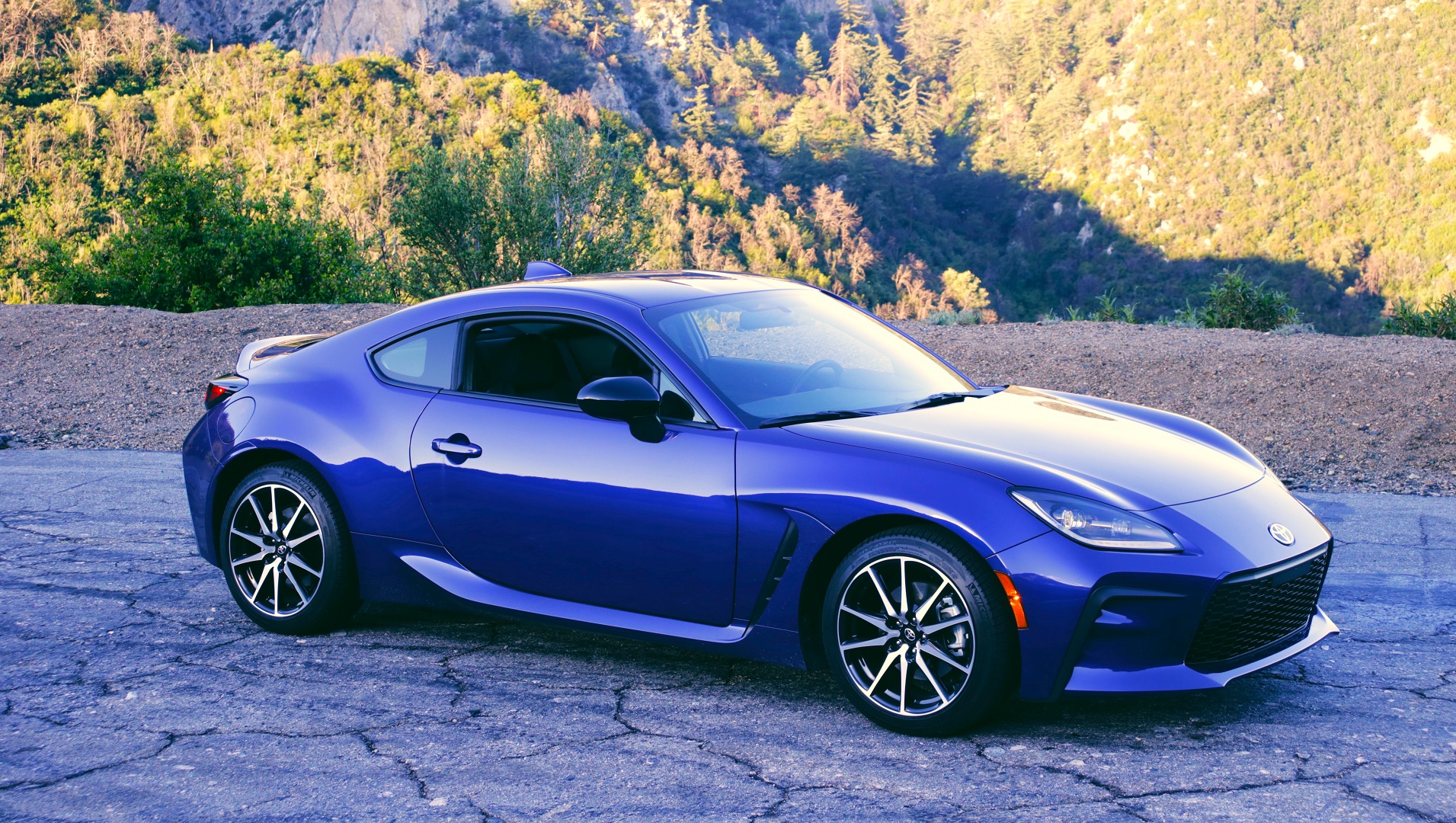

With fresh 2022 Toyota GR86s showing up on more and more Americans’ driveways, the buzz surrounding the rear-wheel-drive sports car shows no sign of dying down. There’s a lot to like about the new Toyobaru, between its looks, focus on fun, and laundry list of revisions to be a sharper, faster sports car.
Earlier this year, I had the opportunity to poke around the new GR86 and I learned a few things beyond what I experienced at the official press drive and read in common press materials. There’s some neat stuff going on behind the front bumper and underneath this torquey little beast.
Full disclosure: Toyota invited me to the Specialty Equipment Marketing Association’s (SEMA) headquarters in Diamond Bar, California, to take part in what was called the 2022 GR86 Measuring Session. I got some free food and two-plus hours to ask questions and thoroughly examine the new 2022 GR86.
Interesting Aero Work

The GR86’s front bumper features channels that divert air around the front tires to improve stability on track. They also really help the aesthetic aspect pop.

Additionally, there’s some interesting design work going on behind these channels. While chatting with on-hand technical advisor Nik Romano, he pointed out that there are vents on the inside of the bumper meant to create a Venturi effect. This pulls air out from behind the front bumper, including potentially hot air created by the radiator, which assists in improving the 86’s overall aerodynamics. This seems like a small and insignificant feature, but when it comes to aero, every teeny bit counts.
GR Accessory Exhaust

The difference in size between the standard factory-fitted muffler and the GR Accessory cat-back exhaust is quite immense. This should not only improve sound level and tone but also shed a little bit of weight off of the rear end.
I asked Toyota for an estimated horsepower gain, as well as an estimated drop in weight and overall size, however, the brand did not offer any exact figures. Though, this cat-back system is constructed from 304 stainless steel, has a tubing diameter of 2.25 inches, and is engineered to seamlessly bolt up with factory gaskets and hardware.

I didn’t get a chance to listen to one of the available vehicles with it mounted up, but technical advisors noted it sounded very good and in no way obnoxious (take that with a grain of salt). In fact, one staff member mentioned that the GR even sounds decent without any muffler at all. I’m sure it’s quite loud, but for the enthusiast who’s looking for a custom straight pipe to save weight and potentially reap some power benefits on track, the potential seems to be there.
A Significant Splitter

This might not be thoroughly eyebrow-raising news for some, but the size of the GR86’s lower splitter is pretty big for standard equipment.

When air hits a splitter, it pushes down on the splitter and the car and creates downforce, which aids front-end grip and stability. The splitter also helps direct air around the car, rather than underneath. Any air that is channeled underneath is typically moved across the bottom of the vehicle more smoothly with a splitter and any additional underbody paneling, which the GR86 has a lot of for being a $30,000 sports car. It’s no Ferrari 488 or 911 GT3, which come equipped with race-car-like flat-bottoms and accompanying fins to direct air effectively and efficiently, but it’s still something.
Passive Oil Cooling Benefits

Beneath the GR86’s oil filter, which is conveniently located on the topside of the engine under the hood, is a heat exchanger. This is designed to bring the oil up to operating temperature faster in colder climates. This not only bodes well for efficiency, but also emissions. Additionally, this simple little piece of temperature control has what Toyota technical advisor Dan Gardner referred to as “passive cooling benefits.” This means when the GR is rolling down the road with oil that’s up to temperature, it assists with keeping it at the right temperature.
Previous-gen Toyobaru owners in hotter climates are well aware of the necessity for aftermarket oil coolers if they’re running these RWD steeds on track. Like every other little overall improvement, a modest heat exchanger is small, but it helps. Though, it remains to be seen if owners in hotter climates will need oil coolers with this new generation.
Like the known improvements to the Toyobaru chassis, these modest changes are fascinating. It shows that Toyota and Subaru put a lot of effort into this new chassis and pay close attention to details that matter for these types of vehicles.
This article originally appeared on CarBibles.com